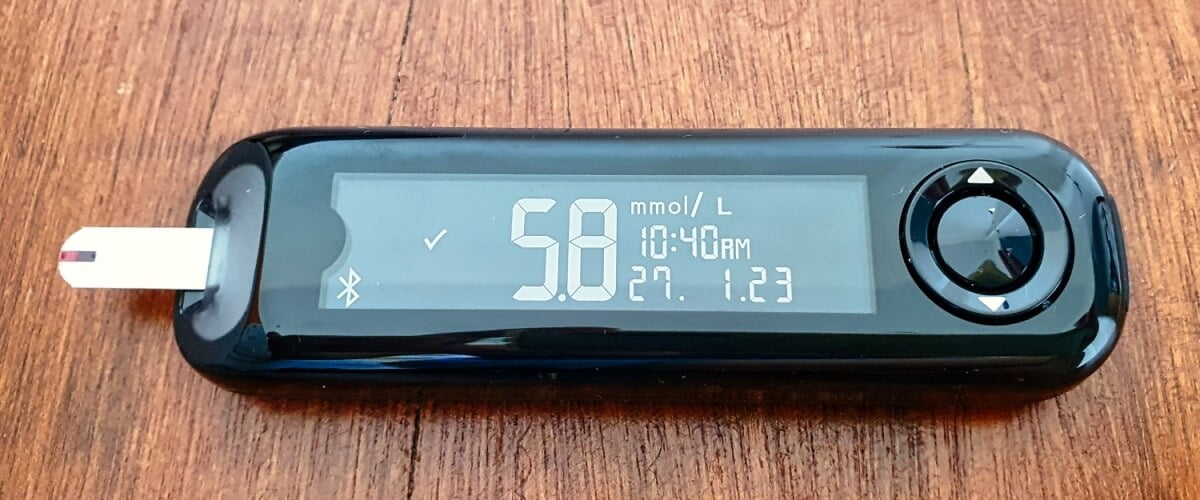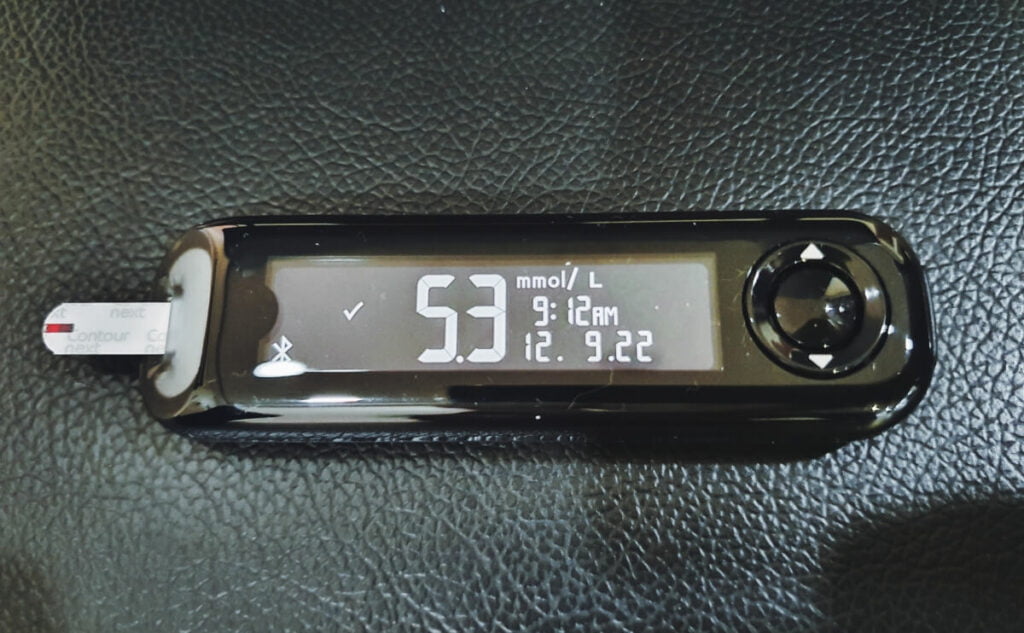Will Regular Consumption of Noni Fruit Lower My Blood Glucose Levels?
I Have Prediabetes
Having grappled with the possibility of having prediabetes for about 18 months, I have come to terms with the fact I have the condition.

On July 6, 2021, my fasting blood sugar level, measured as part of a battery of tests before a scheduled clinic appointment with my gastroenterologist, was 5.6 mmol/L, or 100 mg/dL. Based on the laboratory reference ranges, this level was on the cut-off between normal and prediabetes. All previous laboratory tests of my fasting blood glucose level had been within normal limits.
I wasn’t too concerned about the borderline fasting sugar level then, presuming it was anomalous.
Nevertheless, I decided to lower my sugar level. By modifying my diet and exercising, my weight fell from 74.1 kg to 67.8 kg (an 8.5% reduction) in three months. Consistent with my long-standing aversion to drugs, I refrained from taking any pharmacological intervention. Yet, my fasting blood glucose on October 5, 2021, was unchanged at 5.6 mmol/L. My glycated hemoglobin (HbA1c) was 5.0% – the laboratory reference range for normal limits is less than 6.1%.
On March 29, 2022, I underwent another round of blood tests. My fasting blood glucose level on that day was 5.8 mmol/L, a modest increase from the levels measured about six and nine months earlier (both were 5.6 mmol/L). On March 29, 2022, I weighed 66.95 kg, which was 850 grams lower than my weight on my previous clinic visit on October 5, 2021. With this mild weight loss and no change in my diet or exercise routine, I had expected my fasting blood sugar level to come down. So, I was astounded that it had moved in the opposite direction (upwards) instead.
I had another fasting blood glucose test, among other blood tests, on September 12, 2022, a day before my appointment with my gastroenterologist. This time, the result was the same as the previous one, i.e., 5.8 mmol/L. On the same day, I weighed 65.8 kg, 1.15kg lower than my weight six months earlier.
The table below summarizes my blood sugar/glucose level as measured on blood specimens collected by phlebotomy and analyzed in the hospital’s laboratory. It also includes my weight measured on, or close to, the day I had the blood test.
| Date | Fasting Blood Glucose (mmol/L) | Body weight (kg) |
|---|---|---|
| 07/06/2021 | 5.6 | 74.10 |
| 10/05/2021 | 5.6 | 67.80 |
| 03/23/2022 | 5.8 | 66.95 (03/29/2022) |
| 09/12/2022 | 5.8 | 65.80 (09/13/2022) |
My fasting blood glucose level climbed between mid-2021 and the third quarter of 2022. And it had risen despite my shedding considerable body weight, regular exercise, and a modest and balanced diet.
White Coat Hyperglycemia?
Following the abnormal in-laboratory fasting blood glucose measurement in March 2022, I considered two alternative explanations other than prediabetes: white coat hyperglycemia and steroid hyperglycemia.
Steroid-induced hyperglycemia seemed unlikely. My high blood sugar readings were consistent and independent of when I took the prednisolone and the dose. My fasting blood glucose level has been on an uptrend despite using prednisolone infrequently and less than before the first quarter of 2022.
In 2022, readings on my Contour Next One glucometer were consistently 5.2 mmol/L, significantly lower than the past three in-laboratory results (which were 5.6 mmol/L, 5.6 mmol/L, and 5.8 mmol/L). This finding supported my hypothesis that the borderline and elevated fasting blood sugar levels on laboratory testing were at least partly a reflection of white coat hyperglycemia rather than an innate metabolic disorder.
On September 12, 2022, less than 15 minutes after I had blood taken for lab tests my gastroenterologist had ordered, I checked my sugar level with my home glucometer. My glucometer read 5.3 mmol/L.

When I saw my gastroenterologist on September 13, 2022, I learned the laboratory result was 5.8 mmol/L, significantly higher than what I had on my home glucose meter. Therefore, I concluded that my Contour Next One glucometer gives values approximately 0.5 mmol/L (5.8 mmol/L minus 5.3 mmol/L) lower than the actual value (as measured by the laboratory). That my glucometer needs to be more accurate by this degree is not surprising. Being 8.6% below the reference value, the Contour Next One still performs within its advertised specifications, i.e., the minimum accuracy requirements of the ISO 15197:2013 standard, which requires 95% of the measured glucose values to be within ±15% at glucose concentrations ≥100 mg/dL (≥5.55 mmol/L).
Below are the values I got from my home glucose meter.
| Date | Fasting Blood Glucose (mmol/L) |
|---|---|
| 04/12/2022 | 5.2 |
| 04/14/2022 | 5.2 |
| 06/04/2022 | 5.4 |
| 06/05/2022 | 5.1 |
| 06/22/2022 | 5.2 |
| 09/01/2022 | 5.2 |
| 09/12/2022 | 5.3 |
| 01/27/2023 | 5.8 |
Assuming the device has a high precision (as opposed to accuracy), I surmised that my body’s glycemic control has worsened in the past nine months and that my actual fasting blood glucose level is around 6.3 mmol/L. Another laboratory-based fasting blood glucose test next month, just before my next gastroenterology clinic appointment, may confirm that my fasting blood glucose is now near 6.3 mmol/L. I will also have a hemoglobin A1C test done, which should give us a better indication of how high my blood sugar level has been in the three months preceding the test.
If my fasting blood glucose is 6.1 mmol/L or higher on laboratory-based testing next month, it will meet both the World Health Organization’s and the American Diabetic Association’s definitions of prediabetes.
Possible Contributing Factors to the Higher Fasting Blood Glucose Level in January 2023
The 5.8 mmol/L result on my glucometer on January 27, 2023, surprised me. It was significantly higher than all the measurements of my fasting blood glucose taken on the same device last year (2022).
My diet and exercise program have stayed much the same in the past 12 months. As mentioned above, I dropped 2 kg in body weight, from 67.8 kg to 65.8 kg, between October 2021 and September 2022.
Two factors could have contributed to the unexpected rise in my fasting blood sugar.
1. I Stopped Eating Oatmeal Daily
My core diet has changed since I described it in my post on coping with irritable bowel syndrome in June 2020. However, it has remained relatively stable in the past year, except for one recent modification in the second half of January. I stopped eating oatmeal for breakfast daily from January 19, 2023.
Instead of oatmeal, I ate pancakes made from sourdough discard most days. I still had oatmeal for breakfast on a few days, but it was neither regular nor frequent. When I gave up making a sourdough starter several days ago (January 30, 2023), I found that our stash of rolled oats had run out. So, I have had wholemeal bread and peanut butter for breakfast for the past two days, and I intend to do so until I replenish our supply of rolled oats the day after tomorrow. How much this change in my breakfast diet contributed to the marked rise in my fasting blood sugar reading on January 27 is unclear. We believe oatmeal lowers blood glucose levels in people with diabetes. Excluding oatmeal might lead to an increase in blood glucose. It seems unlikely that the removal of a bowl of oatmeal from my daily diet was the sole cause of my fasting blood sugar shooting up.
2. Cognitive Stress
Besides the usual end/start-of-year commitments, such as paying bills and subscriptions, I had an extraordinary number of deadlines in January. Lunar New Year-related activities in the second half of the month added more items to my to-do list and more stress.
As with missing out on oatmeal breakfasts, I don’t know if the aggregate mental and emotional strain impaired my body’s ability to control blood sugar, but it is an important consideration.
Luckily, I have cleared the things plaguing me at the end of 2022 and January, and I can now focus on what I like to do: adding value to my clients and creating valuable content/infotainment.
Tomorrow also marks the end of the 15-day Chinese New Year celebrations, a fortunate circumstance in my book because it means fewer distractions.
Conclusion
Having eliminated the possibility of white coat hyperglycemia and observing a rising trend in my fasting blood glucose despite my best efforts, I must aknowledge I have prediabetes.